Water damage is a homeowner’s worst nightmare. Water can damage the foundations, walls, ceilings, and floors of buildings affecting their structural integrity. If wooden structures are exposed to water, they can rot. Water can also cause corrosion and mold growth and lead to sewage backups. Exposure to contaminated water can cause gastrointestinal diseases.
Water damage not only affects your property, but also your health, safety, and quality of life, which is why you will want to address it sooner than later. If you notice signs of water damage, have a professional carry out water damage repair Santa Rosa as soon as possible. Timely repairs and water damage restoration can prevent further damage and restore affected areas and structures.
Here are some common causes of water damage.
Natural or Manmade Disasters
Natural disasters such as flooding and violent thunderstorms-almost always accompanied by rainfall can lead to extensive water damage. During a thunderstorm, water can gain access to your property, causing damage to the foundation, structures, and your belongings. Poorly maintained roofs, windows, and doors can exacerbate the risk of water intrusion.
Plumbing Issues
Plumbing problems are one of the most common causes of water damage. Leaking or burst pipes, clogged drains, and faulty plumbing fixtures can wreak havoc on your property. When one or more of your pipes burst, they can quickly release hundreds of gallons of water into your property, flooding every room. If ignored, even a minor leak can lead to significant water damage over time.
Leaky pipes and faucets can lead to structural damage and mold growth, affecting indoor air quality. Plumbing problems like these can arise from aged or corroded pipes, faulty installations, and damage caused by freezing temperatures to fixtures and pipes.
Malfunctioning Appliances
If the hose, seal, or connection valve of a household appliance such as a dishwasher, washing machine, water heater, and refrigerator fails, it can malfunction and release large amounts of water, causing extensive damage to floors, walls, and furniture. To keep your appliances working at their peak efficiency, have a professional inspect and maintain them at regular intervals.
HVAC Issues
Faulty HVAC systems can cause excess condensation and leaks, leading to water damage. Some common causes of HVAC problems include lack of maintenance, age related deterioration, and improper installation.
Roof Leaks
Missing or damaged shingles, deteriorated flashing, and damaged roof membranes can cause roof leaks. If your roof is leaking, water can infiltrate your house causing damage to ceilings, walls, and structural components.
Poor Drainage
Inadequate drainage around buildings can lead to water pooling near their foundations, which can eventually seep into basements or crawl spaces. Drainage issues can lead to clogged gutters, and cause water to overflow and infiltrate the building envelope.
Sewage Backups
A clogged sewer line can result in raw or untreated sewage backing up into your toilet and bathroom. Sewage contains harmful microorganisms. Sewage water can cause extensive damage to your property and belongings.
Structural Issues
Cracks in your foundation or walls can create excess points for water. Poorly constructed or maintained structures are more susceptible to water damage.
Signs of Water Damage
Water damage can manifest in multiple ways, depending on the extent and cause of water intrusion. Here are some common signs of water damage:
Discoloration
Water stains on walls, ceilings, or floors are often indicative of water damage. These stains may appear as yellowish or brownish patches.
Peeling or Bubbling Paint
When water seeps into walls, it can cause paint to bubble, crack, or peel.
Musty Odor
Persistent musty or moldy smells can indicate the presence of mold or mildew. Water damage is a common cause of mold and mildew growth.
Warped or Buckled Surfaces
Warped wood flooring, baseboards, or walls indicate water damage. Warping occurs when water is absorbed into these materials, causing them to swell and distort.
Soft or Sagging Drywall
Water can affect the structural integrity of drywall, causing it to sag or crumble. If your drywall feels soft or appears saggy, you may be dealing with water damage.
Water Stains on Metal Surfaces
Water can cause metal surfaces of pipes, fixtures, or appliances to rust. If water is allowed to sit on metal surfaces for a long time, stains could occur.
Pooling Water or Water Marks
Puddles of water, water marks, or damp spots on floors, walls, or ceilings are common signs of water damage.
Deterioration of Materials
Sagging wood, drywall, or insulation may have incurred water damage.
Increased Utility Bills
If your water bill goes up without a corresponding increase in consumption, your pipes could be leaking. Leaky pipes may lead to significant water damage if the root cause of the problem isn’t addressed in a timely manner.
What to do if you Notice Signs of Water Damage?
If you notice signs of water damage in your home, take these steps to prevent further damage and address the underlying issue.
Identify the Source
Try to locate the source of the water-could be a leaky roof or faucet, burst pipe, or malfunctioning appliance.
Shut off the Main Water Supply
If the water damage is caused by a leaky or burst pipe, turn off the main water supply to your home to stop the flow of water.
Consult a Professional
Unaddressed water damage can cause wood to decay or warp, affecting the structural integrity of your home. To prevent problems, have a professional perform water damage repair in Santa Rosa as soon as possible.
Document the Damage
Take photos or videos of the water damaged areas for insurance purposes. Document the extent of the damage and details related to any personal belongings affected by water damage.
Water damage can have long-term effects. At Bravo Restoration and Construction, we focus on the root causes of water damage, ensuring property owners get long-term solutions. To learn more, call us (707) 837-0675 today!
